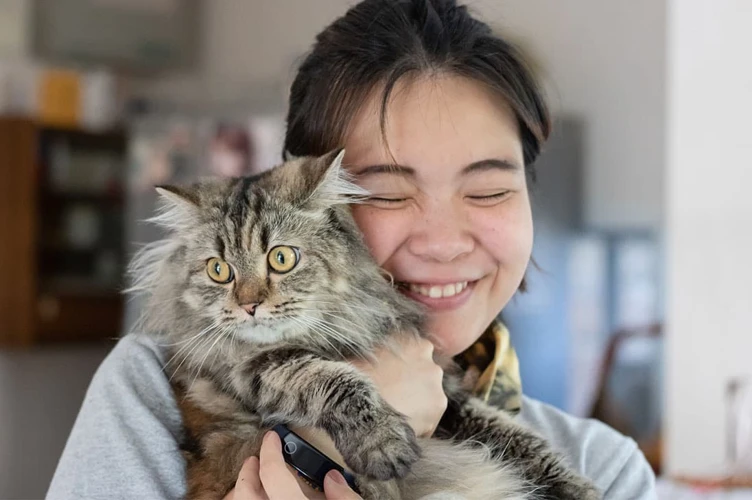You’ve just brought a California Spangled cat into your home and you’re excited to start training them. Clicker training is a popular and effective method, but it’s important to avoid common mistakes that can hinder your cat’s progress. You may feel overwhelmed by the process, but fear not – with a little patience and the right techniques, you can successfully train your California Spangled cat. In this article, we’ll go over the top mistakes to avoid when clicker training your cat, so you can build a stronger bond with your furry friend.
Mistake #1: Skipping the Basics

Skipping the Basics: Why Starting Your California Spangled Cat’s Clicker Training on the Right Foot is Important
When it comes to clicker training your California Spangled Cat, it’s essential to start with the basics. Skipping the fundamentals could lead to frustration, confusion, and a lack of progress in your training sessions. Learning about why the basics are important and what they include can make all the difference in training your cat effectively. Before diving into the common mistakes to avoid, it’s crucial to understand why it’s crucial to get the basics right. If you’re interested in learning more about the benefits of clicker training for California Spangled Cats, check out the benefits article.
1.1 Not Starting with the Clicker
When starting clicker training with your California Spangled Cat, it’s important to use a clicker to establish a clear and distinct sound that signifies to your cat that they have done something right. Not starting with the clicker can cause confusion in your cat and slow down the training process. The clicker should be paired with a treat or reward so that your cat associates the sound with a positive outcome. This can help reinforce the behavior you want to encourage.
Using the clicker should be a two-step process. First, introduce the sound gradually so that your cat becomes accustomed to it. This avoids any startled reactions or confusion on your cat’s part. Our comprehensive guide to cat clicker training explains this process in detail and provides additional tips on using the clicker as part of clicker training for cats. Second, you need to associate the sound of the clicker with some form of reward so that your cat knows that they’ve done something right. This step can involve offering your cat a treat or praise. The point is to make the clicker signify accomplishment and reward.
By not starting with the clicker, you may be making training harder for your cat, as they won’t have that clear, distinct sound to recognize. To avoid this problem, make sure to use a clicker when clicker training your California Spangled Cat. When starting clicker training with your cat, be sure to use our Californian Spangled clicker training tips. These tips provide additional advice on using a clicker to train your cat.
1.2 Not Focusing on Positive Reinforcement
Focusing on positive reinforcement is crucial to successfully clicker train your California Spangled cat. This means rewarding your cat for desirable behavior instead of punishing them for undesirable behavior. Punishing your cat can create fear and stress, which can negatively impact their training progress.
There are different types of positive reinforcement that you can utilize during clicker training, such as treats, verbal praise, or playtime. It is recommended to have a few different types of rewards to keep training fresh and exciting for your kitty. However, it is important to note that the reward must be meaningful to your cat to be effective. For example, if your cat isn’t interested in treats, they won’t be motivated by food rewards.
To ensure that you are focusing on positive reinforcement during training sessions, take note of your cat’s behavior and reward them immediately after they perform a desirable action. Use a clear and specific marker word such as “yes” or “good” followed by a treat or other reward. This will help your cat associate the action with the reward and encourage them to repeat this behavior in the future.
Remember: positive reinforcement creates a positive learning environment for your California Spangled cat and can lead to faster and more successful training.
Incorporating positive reinforcement into your clicker training sessions can be the key to success. However, it’s important to ensure you’re using the right training techniques. For more information on clicker training, check out our cat clicker training guide or our Cali Spangled clicker training tips.
Mistake #2: Inconsistent Training

As a California Spangled cat owner, you understand the importance of clicker training. However, inconsistent training can lead to a lack of progress and frustration for both you and your cat. Consistency is key in ensuring that your cat understands and retains their training. In this section, we’ll explore two common mistakes to avoid when it comes to consistent training and how to overcome them. For more clicker training tips specifically tailored for California Spangled cats, check out these helpful tips.
2.1 Not Training Often Enough
One common mistake when clicker training your California Spangled Cat is not training often enough. Consistency is key when it comes to clicker training. It’s essential to schedule training sessions on a regular basis and stick to them. Skipping training sessions can lead to confusion for your cat, making it harder for them to learn.
To avoid this mistake, it’s a good idea to create a training schedule that fits your cat’s needs and fits into your daily routine. Start with short, frequent sessions and gradually increase the duration over time. A reliable schedule will help your cat stay focused and motivated during your training sessions.
Here are some tips to help you implement a consistent training schedule:
- Set a specific time each day for training sessions, and make it part of your cat’s routine.
- Keep sessions short and sweet, especially in the beginning, to avoid overwhelming your cat.
- Gradually increase the length of sessions over time as your cat becomes more comfortable and engaged in training.
- Always end training sessions on a positive note, with a reward or a fun game.
By following a consistent training schedule, you’ll not only avoid the mistake of not training often enough, but you’ll also be helping your cat learn faster and be more responsive to the clicker.
If you want to learn more about clicker training for California Spangled Cats, check out our guide to advanced clicker training for Cali Spangled Cats here.
2.2 Skipping Training Sessions
Skipping training sessions is another common mistake that cat owners make when clicker training their California Spangled cat. This can be due to a busy schedule or simply forgetting to set aside time for training. However, skipping training sessions can hinder your cat’s progress and slow down the learning process.
Consistency is key when it comes to clicker training. Skipping sessions disrupts the routine and can confuse your cat, making it harder for them to pick up new behaviors. It’s important to establish a regular training schedule and stick to it as closely as possible.
To ensure that you don’t skip training sessions, set reminders or alarms on your phone and find a time that works best for both you and your cat. This could be before mealtime or during a play session, when your cat is already in an active and engaged state of mind.
It’s also important to keep in mind that training should be a positive and enjoyable experience for both you and your cat. If you find yourself consistently skipping training sessions, it may be worth revisiting your approach to training and experimenting with different training techniques to find what works best for you and your cat.
Remember, consistency is key. By establishing a regular training schedule and ensuring that you don’t skip sessions, you can set your California Spangled cat up for success in their clicker training journey.
To learn more about clicker training for California Spangled cats, check out our previous articles on clicker training vs traditional training and how to train your cat with SCi (Structured Clicker Interactions).
Mistake #3: Overwhelming Your Cat

As much as you want your California Spangled cat to learn every trick in the book, overwhelming them with too much at once is not the way to do it. It’s crucial to maintain a healthy training environment that suits your cat and prioritizes his or her needs. Overloading your cat with too many clicker sounds or treats will be detrimental to their progress, which could discourage them from further development. Let’s take a closer look at some of the common mistakes when it comes to overwhelming your California Spangled cat during clicker training.
3.1 Introducing Too Many Clicker Sounds at Once
When first starting clicker training with your California Spangled cat, it’s important to remember that too much stimuli at once can be overwhelming for your furry friend. One common mistake is introducing too many clicker sounds at once, which can lead to confusion and make it difficult for your cat to understand what you’re trying to communicate.
To avoid this mistake, it’s important to only introduce one clicker at a time. Start by using a single clicker consistently for a few weeks before adding in any new sounds. This will help your cat associate the clicker with positive reinforcement and make it easier for them to understand what behavior they are being rewarded for.
Using an html table can be a helpful way to keep track of your cat’s progress and which clicker sounds you have introduced. You can create a table with two columns: one for the behavior you are trying to train and one for the clicker sound you are using to reinforce that behavior. This will help you keep track of which sounds your cat has been exposed to and which ones they are still learning.
Additionally, it’s important to be patient and not rush the training process. If your cat seems overwhelmed or confused, take a step back and go back to using the original clicker sound until they are comfortable again. Remember, clicker training should be a positive experience for both you and your cat.
If you notice that your cat is displaying signs of fear or anxiety during clicker training, such as hiding or hissing, it’s important to address these issues before continuing with training. You can read more about how to train a California Spangled cat with fear or anxiety in our article on training a California Spangled cat with fear or anxiety using a clicker.
3.2 Using Too Many Treats or Rewards
When training your California Spangled Cat using clicker training, it can be tempting to shower your pet with treats and rewards. However, using too many treats or rewards can actually be counterproductive to your training goals.
Here are some common mistakes to avoid when it comes to treats and rewards:
- Overfeeding: It’s important to remember that treats are meant to be just that – a treat. Overfeeding your cat can lead to obesity, which can cause a host of health issues.
- Decreased motivation: If your cat receives too many treats or rewards, it may lose its motivation to perform the desired behavior. This can lead to a lack of progress in training.
- Mistrust: Over-reliance on treats or rewards may cause your cat to mistrust your motives. Your cat may start to see the training as a bribe rather than a positive reinforcement.
So, how do you use treats and rewards effectively?
First, make sure to use small, healthy treats. Your pet doesn’t need a whole treat every time it performs a behavior – a small, bite-sized piece is enough. Consider using your cat’s regular kibble as a treat to prevent overfeeding.
Second, vary the types of rewards you use. While treats are a great option, don’t be afraid to use other rewards such as playtime or verbal praise. This will keep your cat motivated and engaged in the training process.
Finally, make sure to gradually decrease the number of treats or rewards as your cat becomes more proficient in the desired behavior. This will prevent over-reliance on treats and build trust between you and your pet.
Remember, clicker training with your California Spangled Cat is all about positive reinforcement. Using treats and rewards effectively can help you achieve your training goals while building a strong, trusting relationship with your furry friend.
Mistake #4: Failing to Read Your Cat’s Body Language
When it comes to clicker training your California Spangled Cat, it’s important to understand that communication is a two-way street. While you may be focused on training your feline friend, it’s equally important to pay attention to their body language and reactions during the process. Failing to read your cat’s signals can lead to frustration, confusion, and even a breakdown in the training process. In this section, we’ll explore common mistakes trainers make when it comes to reading their cat’s body language and how to avoid them. So, grab a notebook and let’s dive in!
4.1 Not Recognizing Signs of Fear or Stress
When training your California Spangled Cat using clicker training, it’s important to be aware of their body language. One common mistake that cat owners make is not recognizing signs of fear or stress during the training process. It’s crucial to be attuned to your cat’s physical and emotional response to the training, as forcing them to do something they fear or dislike can be harmful to their wellbeing.
Some signs that your cat may be experiencing fear or stress during clicker training include:
| Physical Signs | Emotional Signs |
|---|---|
| Hissing or growling | Withdrawn behavior |
| Flattened ears or dilated pupils | Excessive grooming or scratching |
| Arched back or raised fur | Aggressive behavior |
| Tail twitching or lashing | Avoidance or hiding |
If you notice any of these signs during training, it’s important to remain calm and stop the training session. Continuing to train in such situations can cause your cat to associate clicker training with fear and stress, making it that much harder to train them in the future. Instead, take a break and try again at another time, or consider consulting with a professional cat trainer.
Recognizing your California Spangled Cat’s body language during clicker training is critical to their success and emotional wellbeing. By paying attention to their physical and emotional signs, you can ensure that your cat is comfortable, happy, and receptive to the training process.
4.2 Forcing Training on an Unwilling Cat
It can be tempting to push your cat when it seems unwilling to participate in clicker training. However, forcing training on an uncooperative feline can lead to long-term setbacks in your training progress. It’s important to understand that cats are independent animals and may not always be in the mood to learn new behaviors. If your cat seems reluctant to participate in training, it’s best to end the session and try again later.
One of the most common mistakes is trying to force your cat to perform a behavior by physically manipulating them or using punishment techniques when they don’t comply. This will not only damage your cat’s trust in you, but it can also cause them to become fearful or aggressive.
To avoid forcing your cat into training, look for signs of stress or discomfort during training sessions. If your cat begins to show signs of fear or stress, such as flattened ears, raised fur, or a flicking tail, it’s time to end the session and give your cat some space.
Alternatively, try breaking the training down into smaller steps and gradually increasing the difficulty of the behavior over time. This will not only make the training more manageable for your cat but will also help build their confidence. Remember, patience is key when it comes to clicker training your California Spangled Cat, and forcing them into training will only hinder your progress.
To summarize, it’s important to recognize when your cat is not receptive to training and to never use force or punishment to make them comply. Instead, look for warning signs of stress and discomfort, take a break if necessary, and try breaking the training down into smaller steps to make it more manageable for your cat. With patience and positive reinforcement, your California Spangled Cat will be performing new behaviors in no time.
Conclusion
In conclusion, clicker training your California Spangled cat can be an enjoyable and rewarding experience for both you and your feline companion. However, it’s important to remember to start with the basics, and to focus on positive reinforcement in your training sessions. Being consistent with training, and paying attention to your cat’s body language, can also make a big difference in the success of your training efforts.
Avoid overwhelming your cat with too many clicker sounds or treats at once, and always be aware of your cat’s comfort level during training. If your cat is showing signs of fear or stress, it’s important to back off and take a break. Forcing training on an unwilling cat can be counterproductive and damaging to your relationship with your pet.
Remember that every cat is unique and may require different training techniques. Be patient and observant, and always work at your cat’s pace. With dedication and consistency, clicker training can help you build a stronger bond with your California Spangled cat and create a happy, harmonious living environment for both you and your furry friend.
Frequently Asked Questions
1. Can I train an older California Spangled cat using clicker training?
Yes, clicker training can be effective for cats of all ages. However, it may take more time and patience to train an older cat compared to a kitten.
2. Is it necessary to use treats when clicker training my cat?
Yes, treats are a crucial part of positive reinforcement training and can incentivize your cat to perform desired behaviors.
3. How often should I train my cat using the clicker method?
Consistency is key. Try to train your cat for a few minutes every day, rather than sporadically for longer periods of time.
4. Can I use clicker training to correct unwanted behaviors in my cat?
Clicker training is mainly used to teach new behaviors, but it can also be used to discourage unwanted behaviors by withholding treats or rewards when they occur.
5. How many clicker sounds should I introduce to my cat at once?
It’s best to start with just one clicker sound, then gradually introduce more sounds as your cat becomes comfortable with the training process.
6. Can I train my cat to perform physical tricks using clicker training?
Yes, clicker training can be effective for teaching physical tricks such as jumping through hoops or rolling over.
7. Should I stop clicker training my cat if I notice signs of fear or stress?
Yes, it’s important to stop training and assess the situation if your cat displays signs of fear or stress, such as hiding or aggressive behavior.
8. Is it possible to overfeed my cat during clicker training?
Yes, it’s important to use small, healthy treats and limit the amount given during training sessions to avoid overfeeding.
9. Can clicker training be used to help socialize my cat?
Yes, clicker training can be an effective tool for helping socialize cats and teaching them to feel comfortable around new people or animals.
10. What should I do if my cat is not responding to clicker training?
Persistence is key. If your cat is not responding to clicker training, try switching up the reward or behavior being trained, or seek advice from a professional animal behaviorist.







